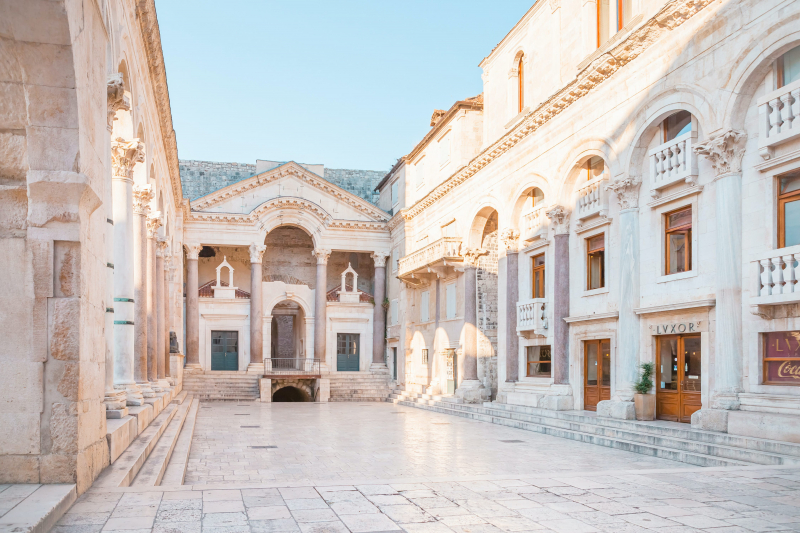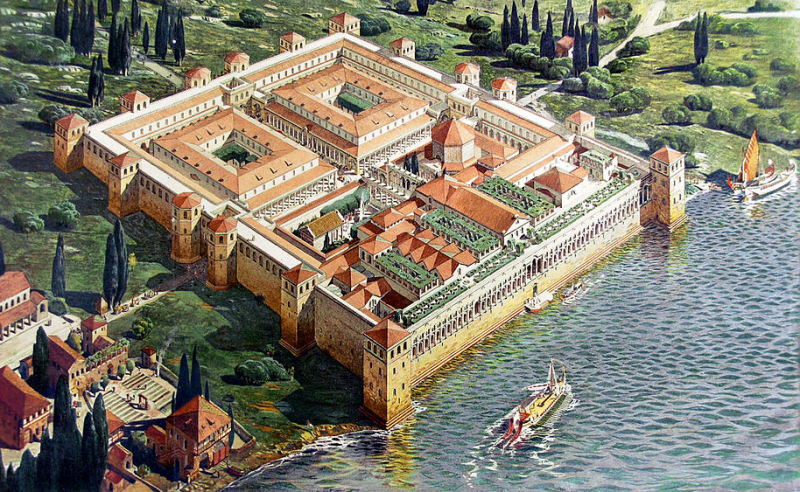Diocletian’s Palace
When Emperor Diocletian abdicated the throne of Rome in 305 AD, a palace was constructed. The Diocletian's palace, which had a total area of 9800 square feet, began in 295 AD and wasn't finished until 305 AD. Although it is called a "palace" because Diocletian intended to use it as his retirement home, the title can be deceptive because the enormous building is more akin to a vast fortress: around half of it was for Diocletian's personal use, and the remaining portion housed the military garrison. The palace's ruins are now a part of Split's historic district, which was in 1979 included to UNESCO's list of World Heritage Sites.
The palace's ground plan is an irregular rectangle with sixteen towers projecting from the western, northern, and eastern facades on the mainland facades. The palace has four towers on the corners of the square, giving it the appearance of a legionary fort like those found on the Danube. The six rectangular ground floors of the rectangle floor were located between the corner and the octagonal, and two of the six octagonal ground-floor towers were framed by three landing openings. Only the remnants of octagonal and rectangular towers, along with three corner towers (all but the southwesterly), have been preserved to this point. The northern landing, which functioned as the primary approach from Salona, is the most architecturally fractured of the three well-preserved landings. The tiny, straightforward, and well-preserved south seaside gate. The palace's facade walls include huge arches that face the land on the west, north, and east facades, while the lower portions of the walls are solid and plain without apertures. The palace's underground spaces have masonry barrel vaults.
Half of the Diocletian's palace was used for military operations, and the other half served as Emperor Diocletian's personal residence. After Diocletian's passing, the Palace continued to serve as the imperial stronghold. The banished members of the Emperor's family utilized it as a sanctuary. When Avars and Slavs demolished the homes of inhabitants from Salona in the 7th century, the structure served as a haven for them. Since then, the building has been home to a large number of restaurants, businesses, and some homes. The fort's remnants now house Split's historical district, which has been recognized as a World Heritage Site by UNESCO since 1979.












